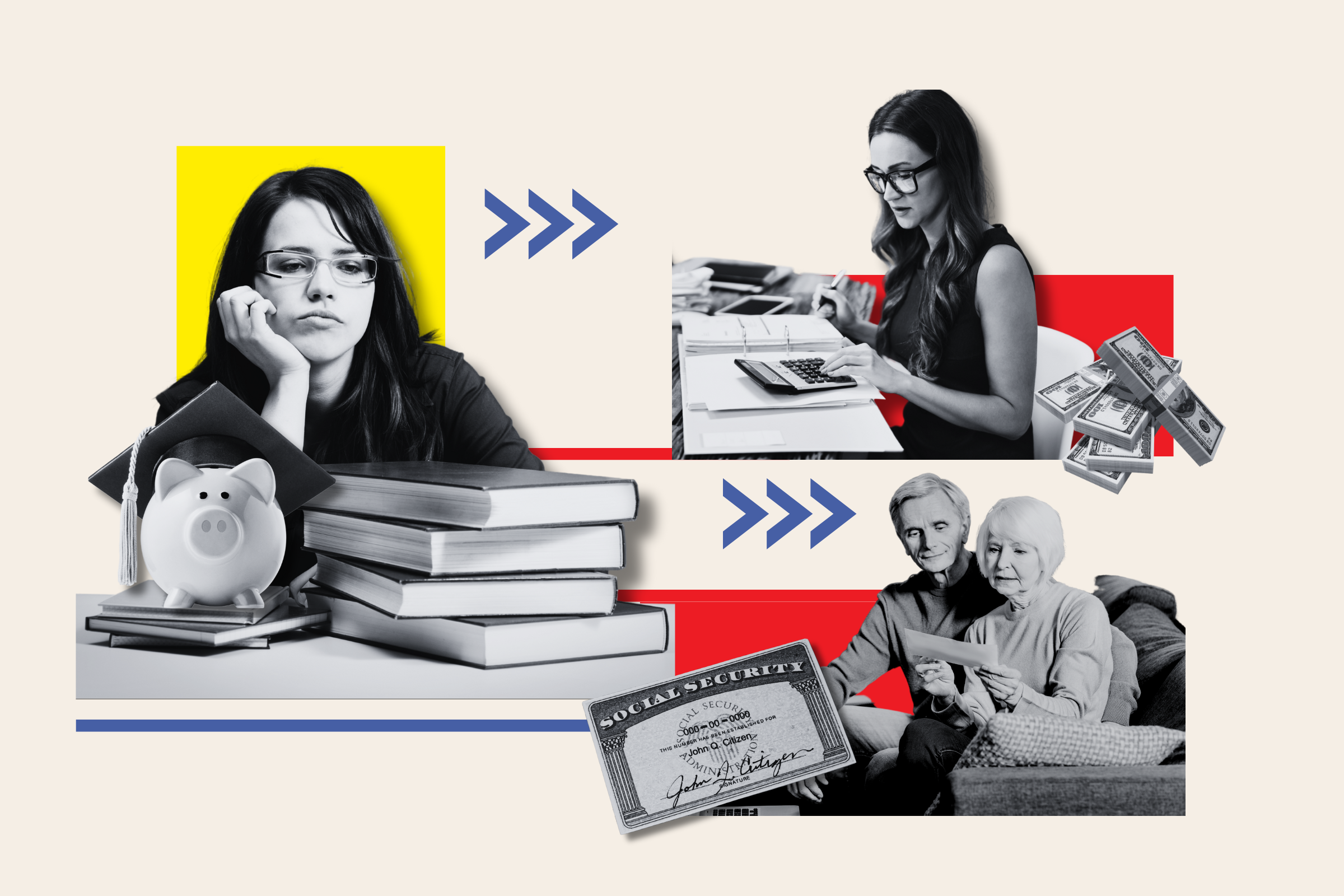
In less than a week, millions of student loan borrowers who have not been keeping up with their payments will face forced collections, meaning their wages, Social Security and tax refunds could all suffer.
The resumption of payments will impact more than 5 million borrowers who are currently in default, the Education Department said, adding that another 4 million borrowers are late in making payments. It ends a years-long pause in forced collections that began during the coronavirus pandemic.
As of May 5, defaulted borrowers will become subject to wage garnishment to collect their outstanding balances.
“The Department of Education is not a creditor you want coming after you,” Adem Selita, co-founder of The Debt Relief Company, told Newsweek. “The consequences of not paying student loans back can be quite severe.”
How Will Collections Impact Me?
Experts that have spoken to Newsweek have said borrowers will need to take quick action to avoid financial penalties.
Failing to make a student loan payment on time can eventually lead to default. Once your loan goes into default, the full remaining balance of your loan, along with any accrued interest, becomes immediately due, which is known as “acceleration.”
The federal government then has the authority to recover the debt by garnishing your wages, withholding tax refunds, and seizing other federal payments, through a process known as Treasury Offset Program (TOP).
Photo-illustration by Newsweek/Getty
Tax Refunds
If you get a tax refund in any given year, this can be subject to garnishing to claw back your outstanding loan.
The government can seize a borrower’s entire federal tax refund, and in some states their state refund, to collect on a defaulted federal student loan. This only applies when the amount borrowed exceeds or matches the tax refund amount. Otherwise, if you owe less, only that will be taken.
The federal government also can’t take back tax refunds that have already been paid out, so for most borrowers, this will only apply in 2026 if they do not get on top of their payments before May 7.
Social Security
As a federal payment, even your Social Security checks aren’t safe from garnishment. Under TOP, the federal government can offset up to 15 percent of Social Security benefits to repay defaulted federal student loans.
Garnishment practices cannot reduce your monthly benefit to lower than $750. Income from disability and illness benefits like Supplemental Security Income are also not subject to collections.
Bad Credit
Non-payment of federal loans is reported to credit agencies, which can have a huge detrimental impact on your credit score.
The New York Federal Reserve reported earlier this year that a delinquency on a student loan payment can lower a person’s credit score by as much as 171 points.
Those with excellent scores of more than 760 could lose this many points, while those with scores between 660 and 759 may face a drop of 165 points. Someone with a subprime credit standing will likely face lower decreases—minus 87 points for those with scores below 620.
“Late payments can hurt your credit score, and if you are actually in default, it can stay on your credit report for up to seven years,” Bobbi Rebell, CFP® and personal finance expert at BadCredit.org, told Newsweek.
“Keep in mind that employers sometimes check your credit, not to mention mortgage lenders if you hope to purchase a home.”
What Can I Do About My Outstanding Loans?
If you’re unsure of what you should do, Bethany Hubert, financial aid specialist at Earnest Inc., said there are options available to help you.
“First, reach out to your loan servicer. They can guide you through available options like deferment, forbearance, or creating a flexible repayment plan,” she told Newsweek. “Programs like income-driven repayment can adjust your monthly payment to better match your budget.”
There are four main types of repayment plan:
- Income-Based Repayment (IBR)—sets monthly payments at 10 to 15 percent of a borrower’s discretionary income, making it a suitable option for those with a high debt-to-income ratio. Borrowers can qualify for loan forgiveness after making 20 to 25 years of payments.
- Income-Contingent Repayment (ICR)—determines payments as either 20 percent of discretionary income or a fixed amount over 12 years, whichever is lower. Loan forgiveness is available after 25 years, and this is the only income-driven plan accessible to Parent PLUS Loan borrowers through consolidation.
- Pay As You Earn (PAYE)—caps payments at 10 percent of discretionary income and is available only to those who took out loans after October 1, 2007. Borrowers can receive loan forgiveness after 20 years of qualifying payments.
- Revised Pay As You Earn (REPAYE)—requires payments of 10 percent of discretionary income, regardless of income level. Loan forgiveness is granted after 20 years for undergraduate loans and 25 years for graduate loans.
If you don’t pick a repayment plan, your loan servicer will put you on the Standard Repayment Plan (a 10-year fixed payment repayment plan), which may result in a higher monthly payment.
“The sooner you take action, the easier it will be to handle,” Hubert said. “Student loans don’t just go away on their own, but there are solutions. Taking some time now to explore your options can help you avoid the stress and set you up for a stronger financial future.”
